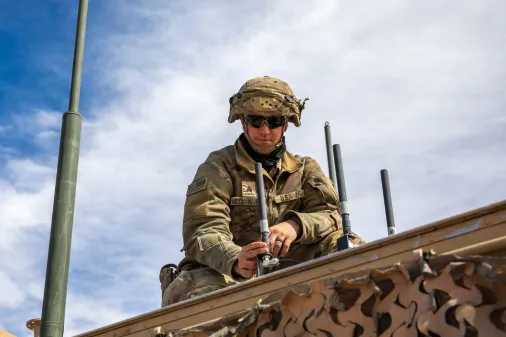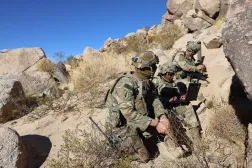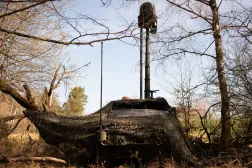New Army cyber organization will focus on activity in the competition space

AUGUSTA, Ga. — Army Cyber Command’s forthcoming Theater Information Advantage Detachment is expected to help the service better compete against adversaries in the so-called competition phase below armed conflict.
The TIADs are a new growth for the Army. There will eventually be three to include ARCYBER’s — which will be focused on transregional threats — as well as one focused on the Pacific and another on Europe.
Experts and officials have acknowledged that the U.S. military has ceded some ground to adversaries when it comes to the competition space. America’s enemies have discovered the importance of being active in the information dimension below the threshold of conflict in order to shape potential operations and even achieve objectives without firing a shot.
ARCYBER’s TIAD, which is currently setting up its forces and getting positions in place to stand up officially in October, is intended to provide that competition force for commanders.
“How can we truly move forward and beat our adversaries and get in front of them in the information fight? Because we’re in that fight,” Col. John Agnello, commander of the 2nd TIAD, which belongs to ARCYBER, said during a presentation at the TechNet Augusta conference Tuesday. “It’s the only game in town that it doesn’t matter if it’s crisis, conflict or just regular competition. Our biggest fight is the competition fight. The competition fight is truly the conflict in the information space. We look at that continuum there, we’re always in the fight in the information space. And that’s where we have to win that battle in order to truly meet our commander’s objectives and our national interests.”
Officials noted that the earlier lack of focus in the information advantage realm was cause to create the TIADs, arguing that what bullets are to armed conflict, information advantage is to competition.
ARCYBER’s detachment, in particular, aims to understand the information environment on behalf of the ARCYBER commander. It seeks to bring together various technologies and disciplines to include cyber, electronic warfare, information operations, psychological ops, civil affairs and public affairs on a single team to layer effects.
That goes further, however, than just monitoring social media or open source information. It’s about understanding the totality of the information space, what communities of interest — to include friendly, adversary and everything in between — are saying and influence or push objectives forward.
Commanders historically have struggled to visualize and describe information as an element of combat power, officials recognize, and the TIAD’s aim is to help share information with mission partners and integrate non-kinetic effects with kinetic effects.
Once fully up and running, the ARCYBER TIAD will actually command and control information forces, Agnello said, noting they won’t just be planners. While the TIADs are being built out of planning elements, namely the G-39 or information staffs, once activated, they’ll separate from that section, and the intent is to be able to command the information forces and capabilities under their purview.






